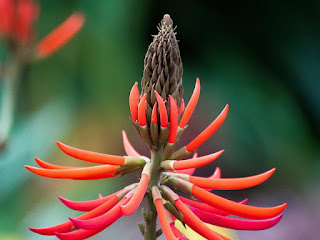What Is Mulungu? Benefits, Uses, and Side Effects
Mulungu (Erythruna mulungu) is an ornamental tree native to Brazil.
It’s sometimes called the coral tree due to its reddish flowers. Its seeds, bark, and aerial parts have been used for centuries in Brazilian traditional medicine .
Historically, mulungu was used for various purposes, such as to relieve pain, aid sleep, lower blood pressure, and treat conditions like depression, anxiety, and epileptic seizures .
This article explores mulungu’s benefits, uses, and potential side effects.
Potential benefits of mulungu
Most of mulungu’s potential health properties can be attributed to its key compounds (+)-erythravine and (+)-11α-hydroxyerythravine, which have been linked to pain relief and reduced anxiety and epileptic seizures .
May reduce feelings of anxiety
Mulungu has long been used in traditional medicine to treat anxiety.
Animal studies have found that mulungu’s compounds (+)-erythravine and (+)-11α-hydroxyerythravine may have strong anti-anxiety effects, similar to those of the prescription drug Valium (diazepam) .
A small human study in 30 people undergoing dental surgery observed that taking 500 mg of mulungu prior to the procedure helped reduce anxiety more than a placebo.
Test-tube studies suggest that mulungu’s potential anti-anxiety properties likely come from its compounds’ ability to inhibit nicotinic acetylcholine receptors, which play a role in regulating feelings of anxiety (.
However, more human studies on mulungu and anxiety are needed before it should be recommended for this purpose.
May protect against epileptic seizures
Epilepsy is a chronic neurological condition that features recurring seizures.
Despite the availability of anti-epileptic drugs, approximately 30–40% of people with epilepsy do not respond to conventional epileptic medicine. That’s one reason why alternative treatments have become increasingly popular .
Test-tube and animal studies suggest that mulungu and its compounds (+)-erythravine and (+)-11α-hydroxy-erythravine may help protect against epileptic seizures .
A study in mice with epileptic seizures found those treated with (+)-erythravine and (+)-11α-hydroxy-erythravine experienced fewer seizures and lived longer. The compounds also protected against short-term memory and learning issues .
While the exact mechanism behind mulungu’s anti-epileptic properties is unclear, some research has found that (+)-erythravine and (+)-11α-hydroxy-erythravine may suppress the activity of receptors that play a role in epilepsy .
Although this research is promising, more human studies are needed on the anti-epileptic properties of mulungu before it should be recommended for this purpose.
May have pain relief properties
Animal studies suggest that mulungu may have pain-relieving properties.
A 2003 study in mice noted that mice treated with mulungu extract experienced fewer stomach contractions and exhibited fewer signs of pain than those treated with a placebo .
Similarly, another study in mice found that those treated with mulungu extract experienced fewer stomach contractions and showed reduced inflammation markers. This demonstrates that mulungu may also have anti-inflammatory properties .
It’s believed that mulungu may have antinociceptive effects, which means that it may reduce sensations of pain from nerve cells.
The reason behind its potential pain-relieving properties is still unclear, but mulungu appears to reduce pain independent from the opioid system, which is the main target of most pain relief medications .
Although these studies are promising, more human research is needed.
Other potential benefits
Mulungu may offer other potential benefits, including:
May reduce inflammation. Several animal studies have found that mulungu extracts may reduce markers of inflammation .
May help treat asthma symptoms. Animal research has observed that mulungu extract may ease asthma symptoms and reduce inflammation .
SUMMARY
Mulungu has been linked to several potential benefits, such as pain relief and reduced anxiety, epileptic seizures, asthma symptoms, and inflammation. However, most of the research was conducted in animals, and more human studies are needed.
Uses and safety
Mulungu can be purchased in some health food stores and online.
It comes in several forms, including as a tincture and powder that can be dissolved in warm water to make mulungu tea.
There’s not enough scientific information to determine an appropriate dosage, and there’s limited information on the safety of mulungu in humans.
In one study, people reported drowsiness after taking mulungu extract .
Furthermore, there’s some concern that mulungu may lower blood pressure .
Vulnerable populations, such as children, pregnant women, and older adults, should avoid taking mulungu products, as its safety hasn’t been established in these groups.
Overall, scientific information on mulungu’s benefits and safety is insufficient to recommend it for health purposes.
It’s also worth noting that — like other herbal supplements — mulungu supplements are largely unregulated and haven’t been tested for safety. In some cases, they may not contain what’s listed on the label or be contaminated with other substances.
SUMMARY
Mulungu can be purchased as a tincture and powder. However, there’s limited human research on its safety and benefits, so it shouldn’t be recommended for health purposes until more human research is available.


Comments
Post a Comment